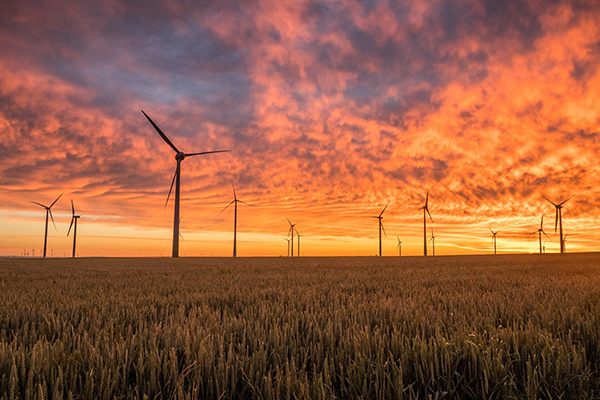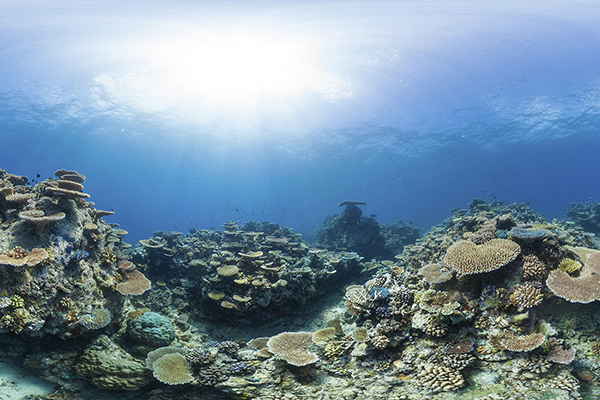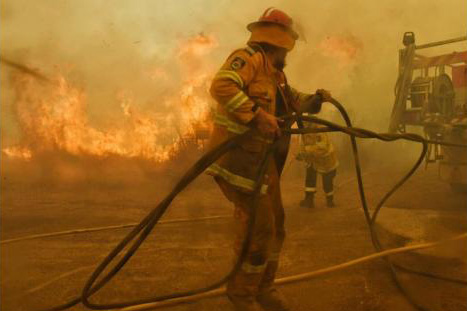If the world has seen a scary future with the emergence of COVID-19, the future of our planet in a 3-4° C scenario takes us to an entirely different level of uncertainty, including in terms of health. UNEP understands that fundamental to a transformational and green recovery will be early action on a longer-term agenda to address climate change, avoid habitat loss and fragmentation, reverse the loss of biodiversity, reduce pollution and improve waste management and infrastructure.
UNEP
While the coronavirus has been spreading around the world and dominating news headlines, UNEP asks climate action to remain urgent. Earth day is now more important than ever.
Nature is sending us another wake-up call with the COVID-19 pandemic, alongside Australian bushfires, broken heat records and the worst locust invasion in Kenya for 70 years. Our destruction of nature is hurting humanity. While our immediate priority must be to protect people from COVID-19 and prevent its spread, our long-term response must tackle climate change and biodiversity loss. To prevent further zoonotic disease outbreaks the destruction of nature for farming, mining and housing must end.
UNEP partner, Ocean Agency, invites parents and children to experience the ocean and its astounding life forms from their homes. Remote diving is the new remote working.
Both humans and great apes are susceptible to infectious diseases; and introducing human pathogens to the great ape population could result in catastrophic losses.
It may be difficult to occupy your children as you also work from home. Here are some ideas to engage your children to teach them about the plastic pollution problem.
Coral reef ecosystems cover just 0.1 per cent of the ocean, yet they support 25 per cent of its life and the lives of half a billion people on land. In the face of climate change and destructive human activities like overfishing and pollution, it is important to understand the interconnectedness of organisms. Protecting coral reefs means protecting the ocean’s variety of life, which in turn means protecting our own lives as well. Experience a coral reef through the eyes of a sea turtle to understand its unique role in maintaining nature’s balance.
The United Nations Environment Programme (UNEP), the United Nations Framework Convention on Climate Change secretariat, and the Commonwealth Secretariat, in collaboration with several United Nations entities, have developed a law and climate change toolkit to promote climate-smart urbanization.
Cities are hubs for cultural, scientific and economic development, but they can also be stark reminders of the environmental and socio-economic challenges we face. Today, cities are responsible for some 70 per cent of greenhouse gas emissions and consume 75 per cent of the world’s energy and resources. As the human population continues to grow and the planet faces unprecedented threats from climate change, there is a critical need for sustainable urban planning. The tenth World Urban Forum (WUF)—the foremost international gathering on sustainable urbanization established by the United Nations—focused on the intersection of culture and innovation to address emerging urban challenges.
Facing the extinction of 1 million plant and animal species, countries are working on a plan to stop biodiversity loss. A draft plan being developed under the UN Convention on Biological Diversity calls for urgent action to stop biodiversity decline.
Nominations for 2020 opened on 20 January 2020 for four categories:
- - Policy leadership
- - Inspiration and action
- - Entrepreneurial vision
- - Science and innovation
Submission deadline: 20 March 2020.
The huge wildfires in Australia, Amazon, California, the Congo basin and Indonesia have drawn the world’s attention to the risks associated with extended periods of unusually hot and dry weather, which is an effect of climate change. The global average temperature is now 1.1°C higher than at the beginning of last century. Higher temperatures create, in some parts of the world, drier conditions, increasing the likelihood and intensity of wildfires, and megafires.
As you make your New Year’s resolutions, keep the environment in mind. If you don’t know where to start, don’t worry. UNEP’s change-maker community is happy to lead the way. Read on for inspiration, so that you can kick off 2020 as a more sustainable global citizen!
The ongoing bushfires in Australia have focused media attention on wildfires more generally and their link to biodiversity and habitat loss, as well as global heating. We take a look at the some of the different types of wildfires, assess their impact and what is causing them, and why accurate, real-time data is so important for wise action to curb them. We need to better understand the different drivers of wildfires and be able to prioritize which wildfires cause the most environmental damage. “The trick is to marshal the relevant data to make it useful to governments and that’s where platforms like the UN Environment Programme’s (UNEP’s) World Environment Situation Room can help,” says Pascal Peduzzi, Director of UNEP’s Global Resource Information Database in Geneva.













